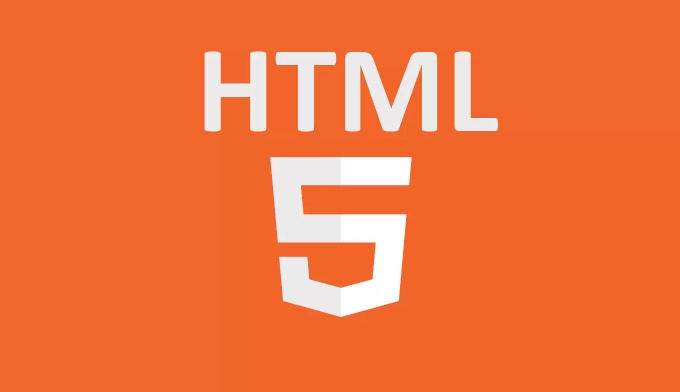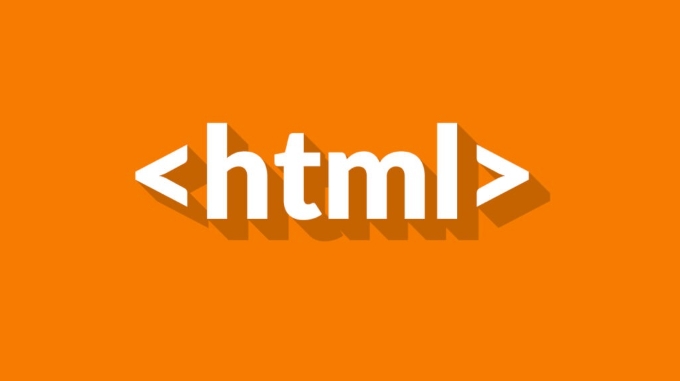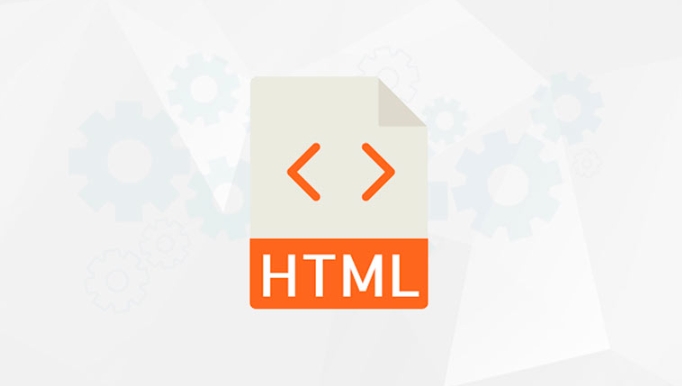The http-equiv attribute in a <meta> tag simulates HTTP response headers to control browser behavior when server access is unavailable. 1. It can set character encoding via Content-Type, such as UTF-8, though HTML5's is shorter. 2. It supports page refresh or redirection using refresh, like waiting 5 seconds before redirecting to another URL, useful for old landing pages. 3. It controls caching with Cache-Control to prevent browsers from storing sensitive pages. However, not all HTTP headers can be mimicked, and modern sites prefer real server-sent headers for better security and performance.

The http-equiv attribute in a <meta> tag is used to simulate an HTTP response header. In simpler terms, it tells the browser how to behave or what to do by mimicking the kind of instructions that would usually come from a web server.

This can be helpful when you don’t have access to server configuration and need to set certain behaviors directly in your HTML file.
Setting Character Encoding with http-equiv
One common use of http-equiv is to define the character encoding for the page, like this:

<meta http-equiv="Content-Type" content="text/html; charset=UTF-8">
This line tells the browser that the page uses UTF-8 encoding, which supports most characters and symbols across languages. While modern HTML5 uses the shorter version (<meta charset="UTF-8">), the http-equiv method still works and may be seen in older sites or systems.
It's especially useful if you're dealing with legacy codebases or servers that don't send proper headers.

Refreshing or Redirecting Pages Automatically
Another practical application is using http-equiv="refresh" to make a page reload or redirect after a certain number of seconds:
<meta http-equiv="refresh" content="5; url=https://example.com">
In this example:
- The page will wait 5 seconds before redirecting.
- Then it sends the user to
https://example.com.
You might see this on old landing pages or maintenance screens where the site owner wants to notify visitors and then move them to another location automatically.
?? A word of caution:
- Auto-refreshing or redirecting can be annoying to users.
- If you must use it, keep the delay long enough (like 5–10 seconds) so people can read any message you’re showing.
Controlling Caching Behavior
Developers sometimes use http-equiv to control how browsers cache a page:
<meta http-equiv="Cache-Control" content="no-cache, no-store, must-revalidate">
This helps ensure:
- Browsers don’t store a cached copy.
- Users always get the latest version of the page.
This is particularly useful for admin dashboards or pages with sensitive data that shouldn’t be stored locally.
Not All Headers Work This Way
It’s worth noting that not every HTTP header can be effectively simulated using http-equiv. Most modern websites rely on real HTTP headers sent by the server for better performance and security.
Also, some headers—like X-Content-Type-Options or Strict-Transport-Security—must be set server-side and won’t work through meta tags.
So while http-equiv is flexible, it has its limits.
That’s basically what the http-equiv attribute does — it gives you a way to mimic some server-level settings right from your HTML. It's not something you'll use every day, but handy to know when you're working without full server control.
The above is the detailed content of What is the http-equiv attribute in a meta tag used for?. For more information, please follow other related articles on the PHP Chinese website!

Hot AI Tools

Undress AI Tool
Undress images for free

Undresser.AI Undress
AI-powered app for creating realistic nude photos

AI Clothes Remover
Online AI tool for removing clothes from photos.

Clothoff.io
AI clothes remover

Video Face Swap
Swap faces in any video effortlessly with our completely free AI face swap tool!

Hot Article

Hot Tools

Notepad++7.3.1
Easy-to-use and free code editor

SublimeText3 Chinese version
Chinese version, very easy to use

Zend Studio 13.0.1
Powerful PHP integrated development environment

Dreamweaver CS6
Visual web development tools

SublimeText3 Mac version
God-level code editing software (SublimeText3)

Hot Topics
 Explain the purpose of the role attribute in ARIA.
Jun 14, 2025 am 12:35 AM
Explain the purpose of the role attribute in ARIA.
Jun 14, 2025 am 12:35 AM
ARIA's role attribute is used to define the role of web elements and improve accessibility. 1. Role attribute helps assistive technology to understand the functions of elements, such as buttons, navigation, etc. 2. Use role attributes to assign specific roles to non-semantic HTML elements. 3. The role attribute should be consistent with the element behavior and be verified by the accessibility tool test.
 HTML and Design: Creating the Visual Layout of Websites
Jun 14, 2025 am 12:39 AM
HTML and Design: Creating the Visual Layout of Websites
Jun 14, 2025 am 12:39 AM
How to create a website layout? 1. Use HTML tags to define the content structure, such as, ,. 2. Control styles and positions through CSS, using box model, float or Flexbox layout. 3. Optimize performance, reduce HTTP requests, use cache and optimize images, and ensure responsive design.
 How do I stay up-to-date with the latest HTML standards and best practices?
Jun 20, 2025 am 08:33 AM
How do I stay up-to-date with the latest HTML standards and best practices?
Jun 20, 2025 am 08:33 AM
The key to keep up with HTML standards and best practices is to do it intentionally rather than follow it blindly. First, follow the summary or update logs of official sources such as WHATWG and W3C, understand new tags (such as) and attributes, and use them as references to solve difficult problems; second, subscribe to trusted web development newsletters and blogs, spend 10-15 minutes a week to browse updates, focus on actual use cases rather than just collecting articles; second, use developer tools and linters such as HTMLHint to optimize the code structure through instant feedback; finally, interact with the developer community, share experiences and learn other people's practical skills, so as to continuously improve HTML skills.
 How do I use the element to represent the main content of a document?
Jun 19, 2025 pm 11:09 PM
How do I use the element to represent the main content of a document?
Jun 19, 2025 pm 11:09 PM
The reason for using tags is to improve the semantic structure and accessibility of web pages, make it easier for screen readers and search engines to understand page content, and allow users to quickly jump to core content. Here are the key points: 1. Each page should contain only one element; 2. It should not include content that is repeated across pages (such as sidebars or footers); 3. It can be used in conjunction with ARIA properties to enhance accessibility. Usually located after and before, it is used to wrap unique page content, such as articles, forms or product details, and should be avoided in, or in; to improve accessibility, aria-labeledby or aria-label can be used to clearly identify parts.
 How do I create a basic HTML document?
Jun 19, 2025 pm 11:01 PM
How do I create a basic HTML document?
Jun 19, 2025 pm 11:01 PM
To create a basic HTML document, you first need to understand its basic structure and write code in a standard format. 1. Use the declaration document type at the beginning; 2. Use the tag to wrap the entire content; 3. Include and two main parts in it, which are used to store metadata such as titles, style sheet links, etc., and include user-visible content such as titles, paragraphs, pictures and links; 4. Save the file in .html format and open the viewing effect in the browser; 5. Then you can gradually add more elements to enrich the page content. Follow these steps to quickly build a basic web page.
 What is an HTML tag?
Jun 13, 2025 am 12:36 AM
What is an HTML tag?
Jun 13, 2025 am 12:36 AM
HTMLtagsareessentialforstructuringwebpages.Theydefinecontentandlayoutusinganglebrackets,ofteninpairslikeand,withsomebeingself-closinglike.HTMLtagsarecrucialforcreatingstructured,accessible,andSEO-friendlywebpages.
 How do I create checkboxes in HTML using the element?
Jun 19, 2025 pm 11:41 PM
How do I create checkboxes in HTML using the element?
Jun 19, 2025 pm 11:41 PM
To create an HTML checkbox, use the type attribute to set the element of the checkbox. 1. The basic structure includes id, name and label tags to ensure that clicking text can switch options; 2. Multiple related check boxes should use the same name but different values, and wrap them with fieldset to improve accessibility; 3. Hide native controls when customizing styles and use CSS to design alternative elements while maintaining the complete functions; 4. Ensure availability, pair labels, support keyboard navigation, and avoid relying on only visual prompts. The above steps can help developers correctly implement checkbox components that have both functional and aesthetics.
 How do I minimize the size of HTML files?
Jun 24, 2025 am 12:53 AM
How do I minimize the size of HTML files?
Jun 24, 2025 am 12:53 AM
To reduce the size of HTML files, you need to clean up redundant code, compress content, and optimize structure. 1. Delete unused tags, comments and extra blanks to reduce volume; 2. Move inline CSS and JavaScript to external files and merge multiple scripts or style blocks; 3. Simplify label syntax without affecting parsing, such as omitting optional closed tags or using short attributes; 4. After cleaning, enable server-side compression technologies such as Gzip or Brotli to further reduce the transmission volume. These steps can significantly improve page loading performance without sacrificing functionality.






